and played a part in popularizing and making available a new silhouette using the new design of the mid-century now Victorian Corset. (Queen Victoria, 1870’s perhaps)
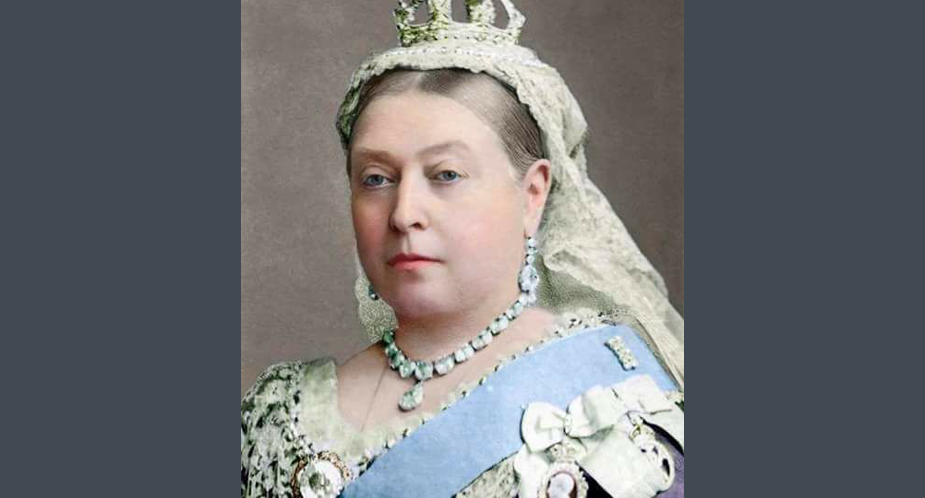

and played a part in popularizing and making available a new silhouette using the new design of the mid-century now Victorian Corset. (Queen Victoria, 1870’s perhaps)
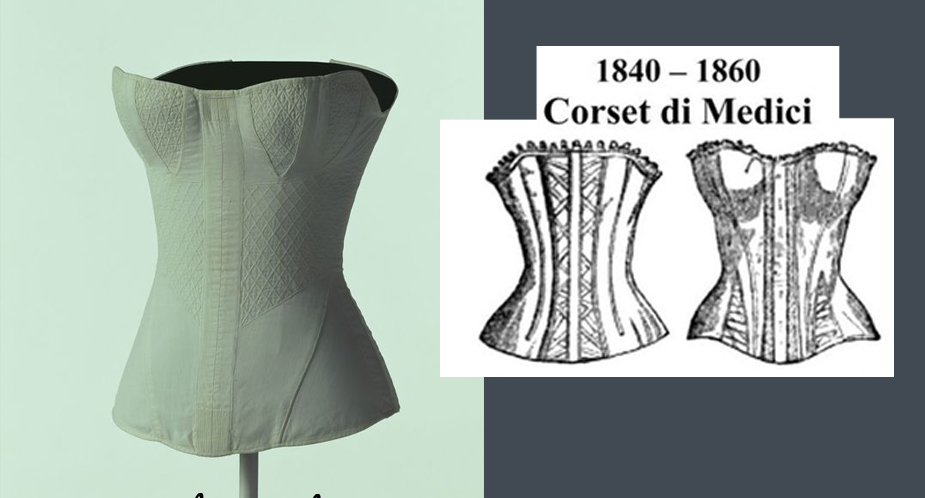
where lighter-weight corsets were preferred, a new cut was introduced: the corset without gussets as had been the style through most of the Regency and pre-Victorian eras. (1830 Extant bust gores dominant vs 1850’s bust gores disappearing)
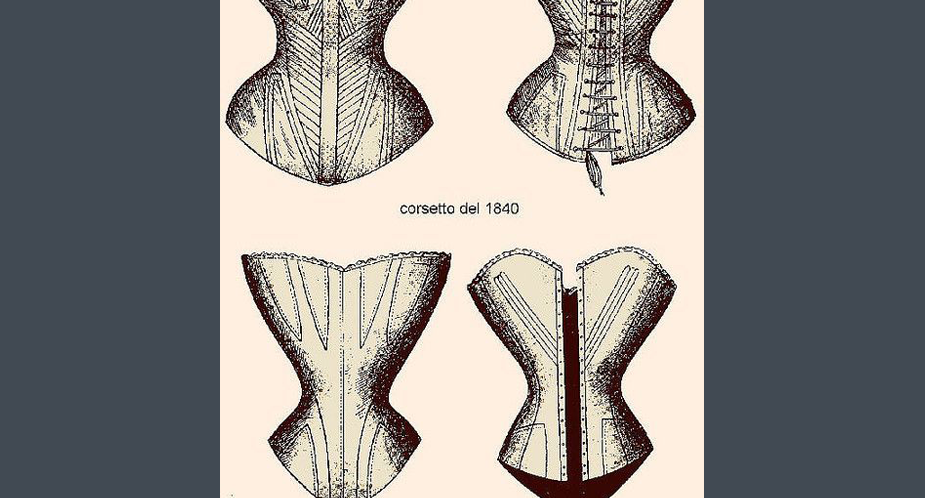
to the wearer’s measurements in the 1840’s and 1850’s, there was also a thriving market in cheaper mass-produced corsets. (Patent sketch for 1840 and 1845 mass produced corsets)
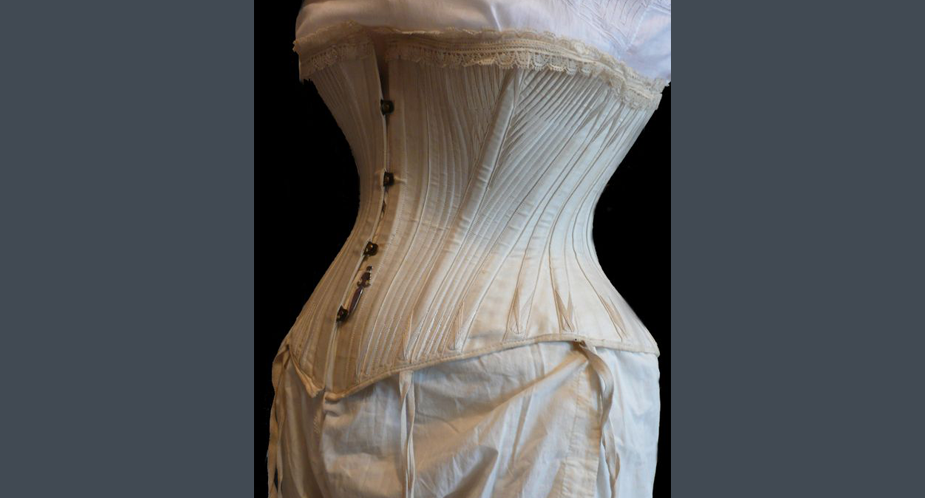
the actual re-shaping the body using the corset. (Extant: 1865 form fitting corset with bonings both following and actually shaping the body)
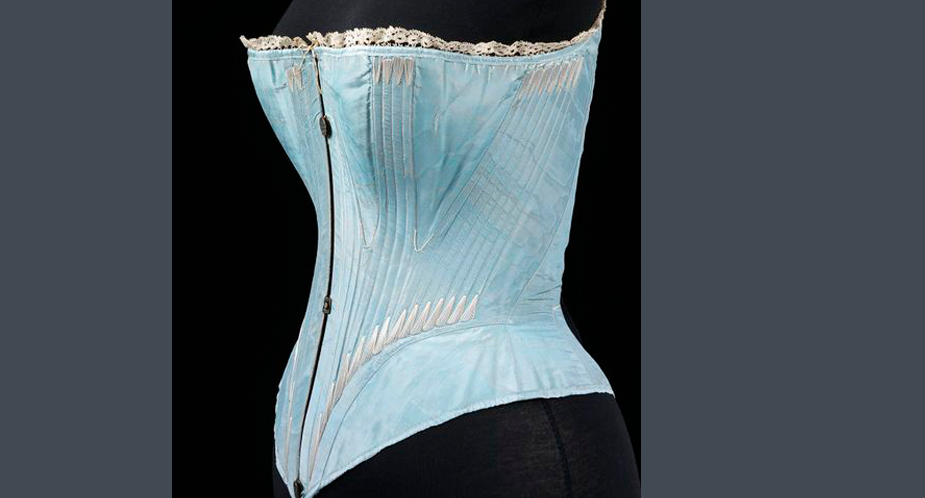
curved with the figure rather than tricked the eye as the earlier stays, or followed the natural shape of a woman’s body. (Extant: 1864 corset shows the figure conforming new shape)
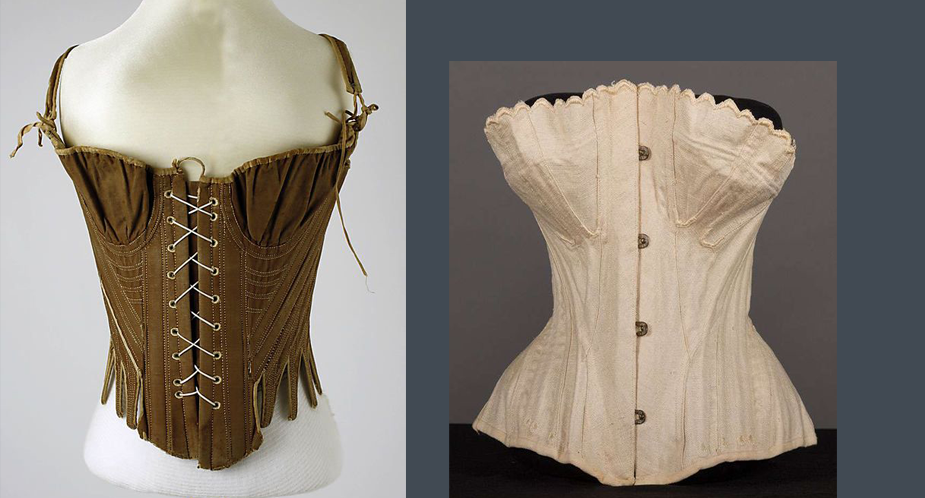
exaggeratedly curvaceous rather than funnel-shaped like the late 18th century and Regency styles had been. (Extant: 18th Century “cone” vs mid-1850’s “curves”)
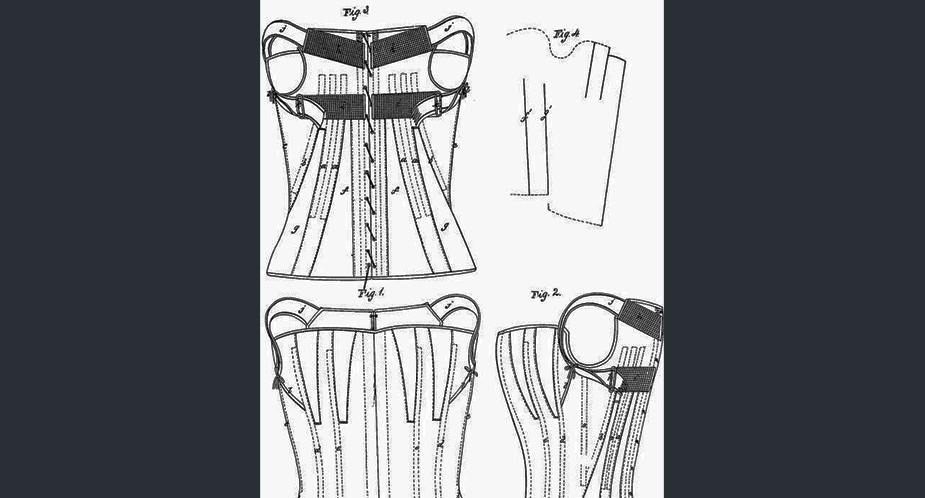
ended at the hips, but flared out and ended several inches below the waist. (1850 patent for cinching corset)
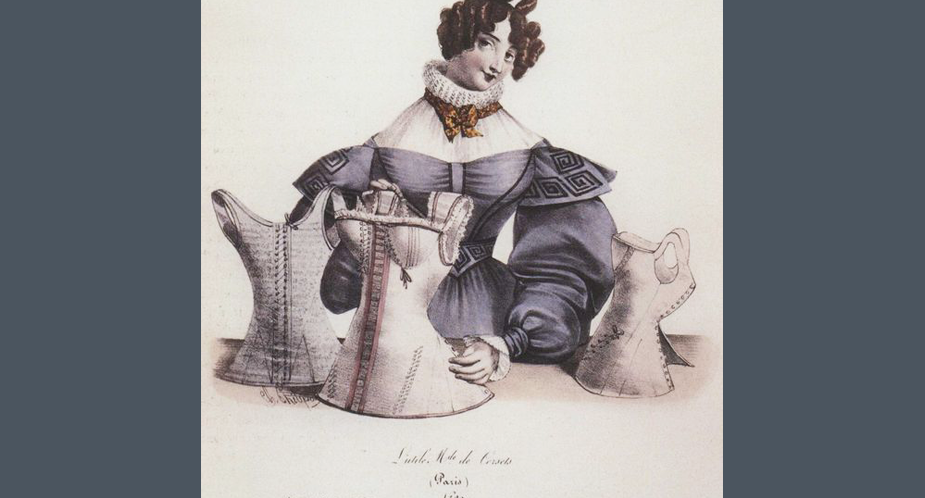
first became almost universally popular. The corset differed from earlier corsets and stays prior to 1840 in numerous ways. (Late 1830’s sketch by Philipon, “Les Marchande des corsets”)

disappeared in about 1837 with the rise of Queen Victoria as the fashion icon, the waist itself had to be cinched tighter in order to achieve the same visual effect as having large shoulders. The focus of the fashionable silhouette for corsets of the Victorian era then became the hourglass. …
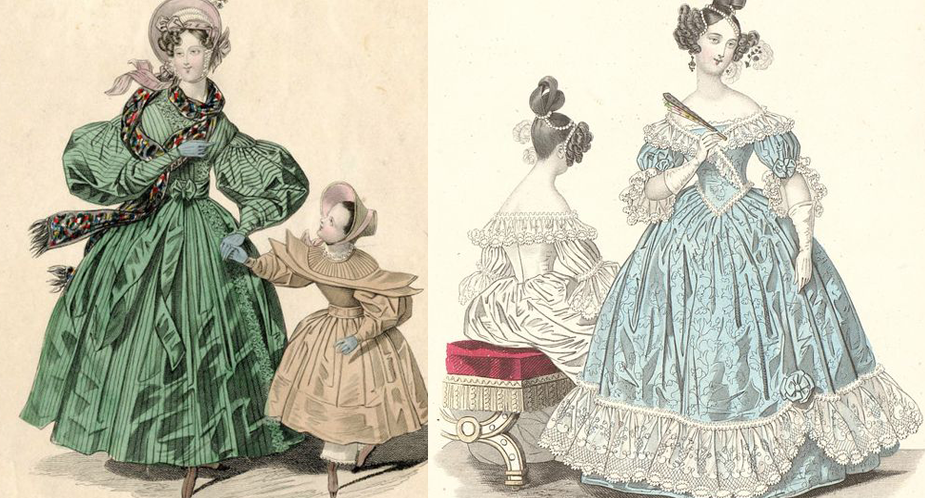
huge sleeves, a high waist, and increasingly larger skirt. As the decade progressed, the waistline dropped, and the objective became to have a tiny waist. This concept lasted well until the end of the century. (1836 fashion plates showing the wide sleeved fashion of the day)